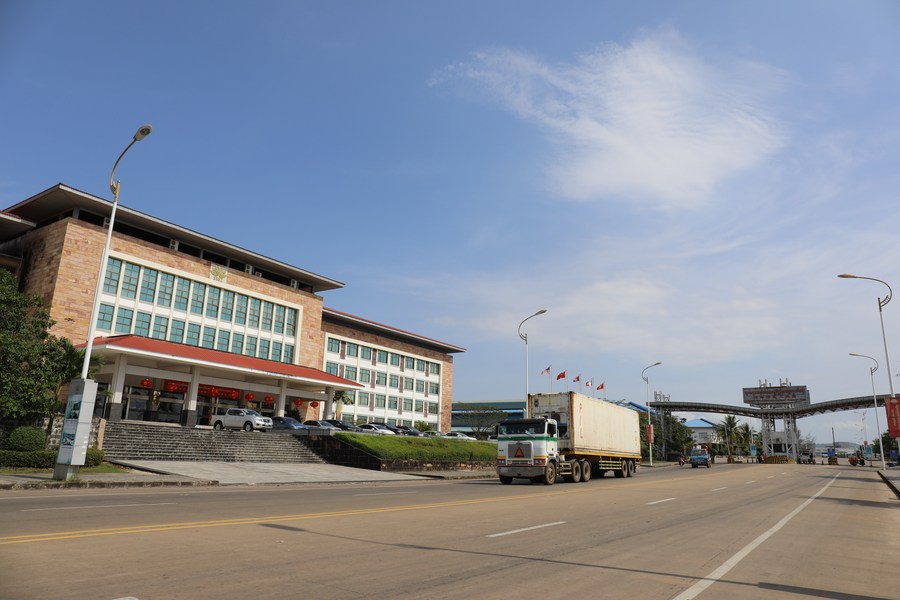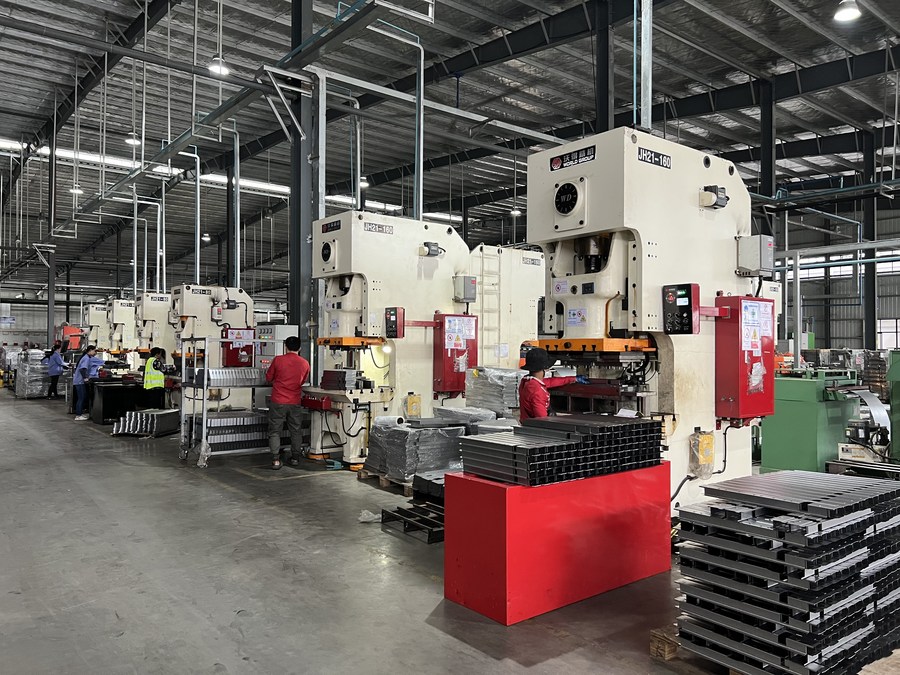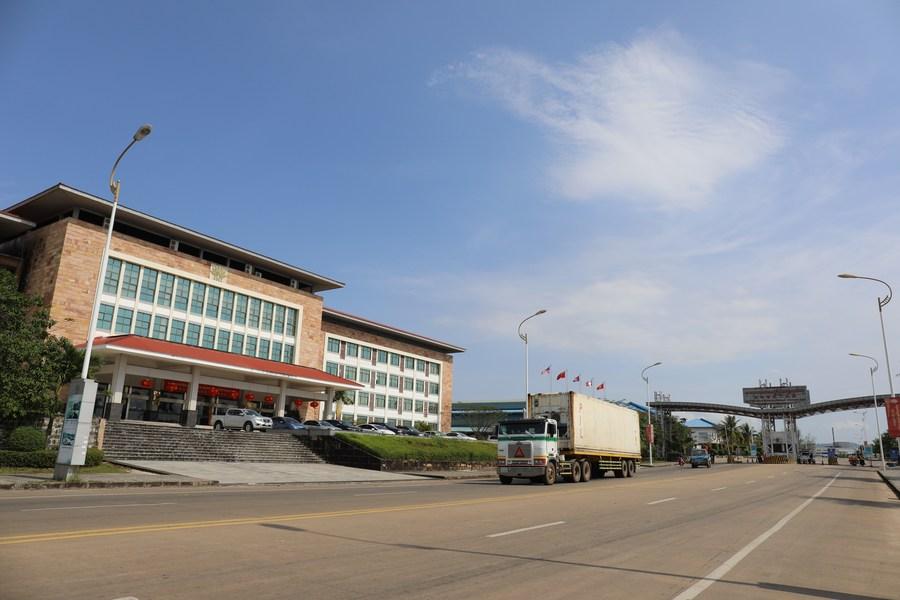
Photo taken on July 19, 2022 shows the entrance of the Sihanoukville Special Economic Zone (SSEZ) in Preah Sihanouk province, Cambodia. (SSEZ/Handout via Xinhua)
China remained the top foreign investor in Cambodia, accounting for 43 percent of the total investment of 2.99 billion dollars the kingdom approved during the January-June period this year.
PHNOM PENH, July 24 (Xinhua) -- Cambodia attracted fixed-asset investment of 1.29 billion U.S. dollars from China in the first half of 2022, according to a report from the Council for the Development of Cambodia on Saturday.
China remained the top foreign investor in the Southeast Asian country, accounting for 43 percent of the total investment of 2.99 billion dollars the kingdom approved during the January-June period this year, the report said.
Other foreign investments in the kingdom for the first half of this year were from Thailand, Samoa, British Virgin Islands, South Korea, Singapore, Cayman Islands, Malaysia, Japan and Australia, it added.
Investment projects had been focused on agriculture and agro-industry sectors, manufacturing, tourism, and infrastructure.
Heng Sokkung, secretary of state and spokesman for the Ministry of Industry, Science, Technology and Innovation, said excellent ties, the Cambodia-China Free Trade Agreement (CCFTA) and the Regional Comprehensive Economic Partnership (RCEP) trade deal are the main factors encouraging more Chinese investors to Cambodia.
Both the CCFTA and the 15-member RCEP trade deal entered into force on Jan. 1, 2022.

People work at a factory in the Sihanoukville Special Economic Zone (SSEZ) in Preah Sihanouk province, Cambodia on July 19, 2022. (SSEZ/Handout via Xinhua)
"I believe that these free trade agreements, together with Cambodia's favorable investment law, peace and political stability, have provided a great opportunity for foreign investors, particularly Chinese ones, to invest in Cambodia," he told Xinhua.
"Chinese investment has not only brought in new capital, but also advanced technologies for Cambodia's socio-economic development," he added.
Lim Heng, vice president of the Cambodia Chamber of Commerce, said the ironclad friendship and the Belt and Road Initiative are also the major factors attracting more Chinese investors to the kingdom.
"Chinese investment is essential to help boost Cambodia's economy and create new jobs for Cambodian people in the post-COVID-19 pandemic era," he told Xinhua.
Meanwhile, Cambodia's General Department of Customs and Excise registered a 19.7 percent year-on-year growth in the Cambodia-China trade volume to 5.98 billion dollars during the first half of 2022.
Ministry of Commerce's undersecretary of state and spokesman Penn Sovicheat said China is the largest trading partner of Cambodia, foreseeing that bilateral trade growth will be higher in the coming months and years.
"China is a huge market for Cambodia, especially for our potential agricultural products such as rice, bananas, mangoes and cassava, among others," he told Xinhua.
"Both the RCEP and the CCFTA have been giving a boost to our trade and investment growth," he said.
RCEP comprises 15 Asia-Pacific countries including 10 ASEAN member states, namely Brunei, Cambodia, Indonesia, Laos, Malaysia, Myanmar, the Philippines, Singapore, Thailand and Vietnam, and their five trading partners, namely China, Japan, South Korea, Australia and New Zealand.




 A single purchase
A single purchase









